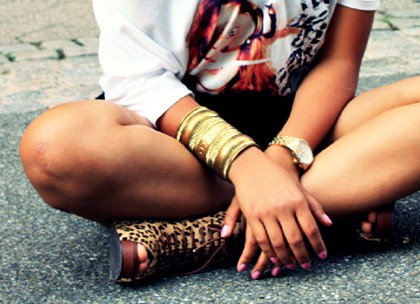Shopping centres have needed to up their games in recent years. We’ve all got a virtual high street on our pockets thanks to the arrival of smartphones so why do we need to go to the effort of actually venturing outside?
Yet shopping centres themselves have been through all this before and know the answer. Why, when these were first built, should we have driven out of town to part with our cash at stores that we largely had access to on the high street?
The answer then, as now, is to be bigger and better. Big name stores have always been the ‘anchors’ to pull people into shopping centres but with the whole online world to contend with the centres need greater star power that only high-end luxury can achieve.
That’s where luxury fashion brands come in. These are the names that have the potential to turn heads – and attract all-important footfall to shopping centres.
Hugo Boss and Michael Kors have recently announced that they will take shops in Bristol’s Cabot Circus shopping centre. Owners Hammerson promises they won’t be the last star arrivals to Bristol and it has a track record to suggest it will come good on its promise – after delivering maternity brand Séraphine to Leeds’ Victoria Quarter.
Séraphine, a favourite of Gwen Stefani, was joined in the upmarket Leeds arcades by French fashion retailer Sandro.
Beyond that, Victoria’s Secret has gone beyond the confines of the capital for the first time, three years after it first made a jump from the US.
These are brands that are thriving and are choosing to invest in the potential of the regions, with towns and cities finally displaying the confidence to invest in their future. The shopping centres can get their star names – the star names can exploit further expansion – it’s a win-win situation.
Mark ‘Jappy’ Gonzalez has opened a number of high-end retail brands under his H&F Retail Concepts umbrella in the US, and explained to Inquirer.net why the time is now right in the economic cycle for the luxury brands to emerge.
He said this is the result of the fact that economic confidence is slow to filter through to retail.
He said: “Technically you don’t see the effect of that in retail until after about five years. They pay for other things first—homes, cars. After that, it reaches retail.
It takes a while. In economics, you have to have that climate consistency for about 10 years before it has any direct impact on retail. I think we’re reaching that.”
Yet the rising marriage of luxury brand and local centres is merely an expansion and will in no way replace the bedrock of the industry: London and the internet.
The rush to the regions actually coincides with a consolidation in the capital for many brands – with many choosing to purchase rather than rent flagship stores in the likes of Bond Street.
Fergus Keane, senior director at retail agent Cushman & Wakefield’s West End team, recently told The Independent: “Landlords know there is so much competition for prime space that they can charge almost what they like as they know how important London flagships are for these retailers.
“This has driven the retailers themselves, including some of the biggest luxury names in the world, to try and buy buildings for their own occupation, particularly in the West End where they can control their destiny and image for the long term.”
These London locations have the glamour long-associated with their postcode while the sheer browsing potential online – with the likes of How To Spend It showcasing the best the internet has to offer – gives a variety that shopping centres struggle to offer.
Local shopping centres and luxury brands may well be in the early throes of a long and plentiful relationship, but the doesn’t spell the end for the avenues that have helped fuel their success.

